Power of traditional beliefs lies at the heart of an anti-mine campaign in PNG
MONGABAY: Jim Tan (17th April 2023)
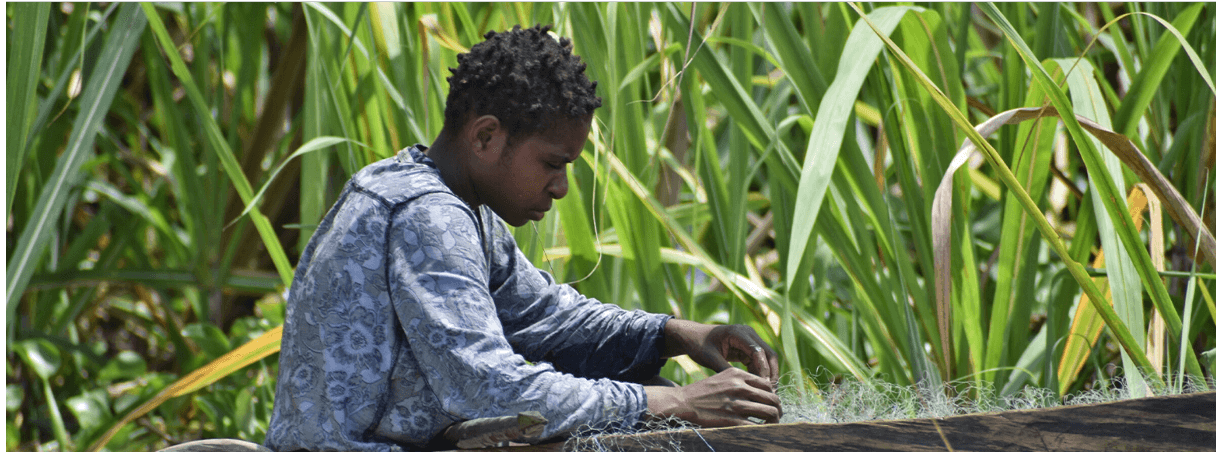
- A newly published study published explores the important role that traditional Papua New Guinean beliefs play in an ongoing campaign against a copper and gold mine on a tributary of the Sepik River.
- Critics say the controversial mine project could potentially pollute one of the most biologically and culturally diverse places on Earth, while supporters point to potential development benefits.
- The Save the Sepik campaign against the mine harnesses traditional governance structures and beliefs, acknowledging the spirits of ancestors, the land and river, in a declaration that has become a rallying cry for the campaign.
- The campaign’s success so far — licenses haven’t been awarded for the mine project — is part of a growing global movement that acknowledges the close relationship some communities have with a sentient environment.
Emmanuel Peni’s first response to a list of questions about his role in a campaign against a proposed copper and gold mine is to send back an idyllic photo of the Sepik River, his home, with a tray of freshly caught fish in the foreground.
“The Sepik River is us, and we are the Sepik River, there is no distinction,” he says. “It’s really hard to explain the connection, it’s so diverse in terms of how people explain the connection to the river.”
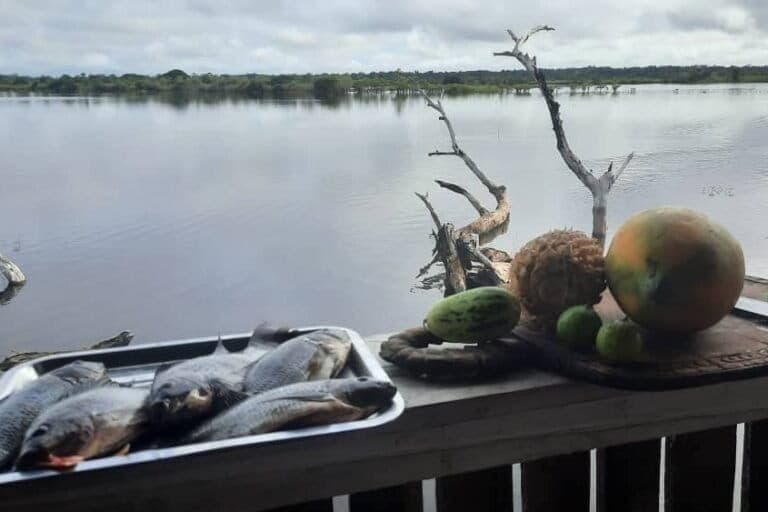
The view from Peni’s home in the hamlet of M’bavambak along the Sepik River. “Sepik river is the lifeblood of the plants and animals, it’s the lifeblood of us the people who live here,” he said. “We define ourselves by the river, it’s the Sepik river and I am Sepik.” Image courtesy of Project Sepik.
As the project coordinator for Project Sepik, Peni has been at the center of a groundswell of opposition against plans to build a gargantuan 1,145-hectare (2,829-acre) open-pit copper and gold mine and 12,700-hectare (31,400-acre) tailings dam to store the mine waste along the Frieda River, a tributary of the Sepik River, in western Papua New Guinea. Critics of the mine have highlighted the risks of potentially toxic mine waste polluting one of the most biologically and culturally diverse places on Earth, pointing to evidence from scientific experts including a team of 10 United Nations special rapporteurs.
But the campaign has also expanded far beyond ecological arguments or economic debates over the potential costs and benefits of the mine, to acknowledge traditional Papua New Guinean perspectives on nature — something that caught the attention of Christiane Falck, an anthropologist from the University of Göttingen in Germany.
Falck recently published a paper in the journal Anthropological Forum examining the Supreme Sukundimi Declaration (SSD), a joint statement from clan leaders in 25 villages along the Sepik River that has become a rallying cry for the campaign.
The declaration, published by the Save the Sepik campaign in May 2020, called for a total ban of the Frieda River mine, saying, “The Sepik River is not ours. We are only vessels of the Sepik Spirit that dwells to protect it. We will guard it with our lives.” In addition to addressing scientific and ecological concerns over the mine, the SSD specifically acknowledges the voices of ancestors and the spirits of the river, land, plants and animals.
“Project Sepik’s campaign against the Frieda River copper-gold project combines different approaches and logics to reach different audiences,” Falck says. “What I found so interesting about the Supreme Sukundimi Declaration is that it so clearly reflects the importance that spirits have for Sepik people’s lifeworld and for Papua New Guineans more generally.”
While Project Sepik has successfully used social media throughout the campaign, internet penetration in Papua New Guinea was just 10% when the campaign started in 2016. Online campaign material has been vital in targeting international supporters, getting university students on board, and demonstrating the strength of support to government ministers. But what has truly driven the movement, Peni says, is the social nature of the communities themselves spreading and sharing stories beyond social media.
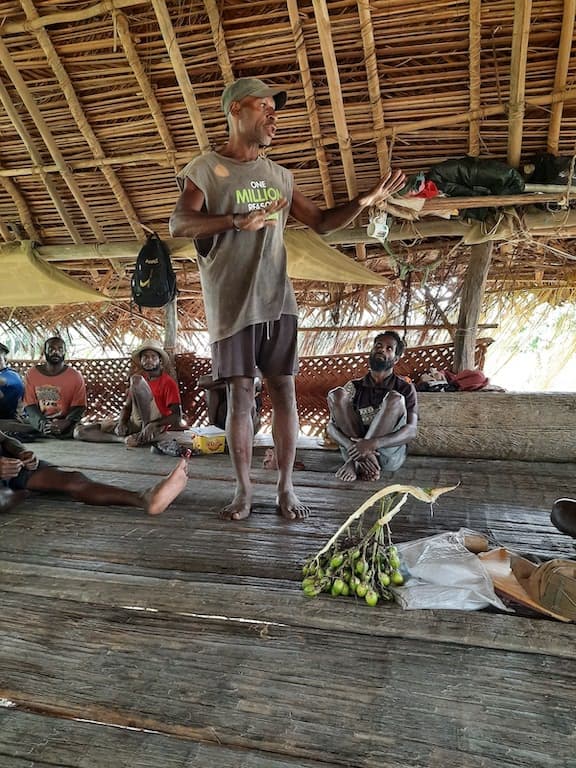
George Mira talks at a meeting in Singrin Village along the Sepik River. Image courtesy of Project Sepik.
Shared traditional beliefs were an important way to unite the communities living along the Sepik River. Peni says he wrote the SSD in recognition that it’s the clans who oversee the guardianship of the land in many parts of Papua New Guinea.
“Understanding that, I felt that the N’gego [spirit house] leaders held much more power than the formal local governors and councilors or the provincial government assembly,” he says. “That’s why we went to the N’gego.”
Producing the declaration, which takes on one of the names for the river god in the region, was a collaborative process in which Peni sought consensus on the document’s message from 28 N’gegos representing 25 villages and approximately 78,000 people along the Sepik River.
“The SSD builds on local governance structures, in which men’s houses are an important part,” Falck says. “It can be understood as an attempt to strengthen those structures and give voice to the social groups represented by this institution.”
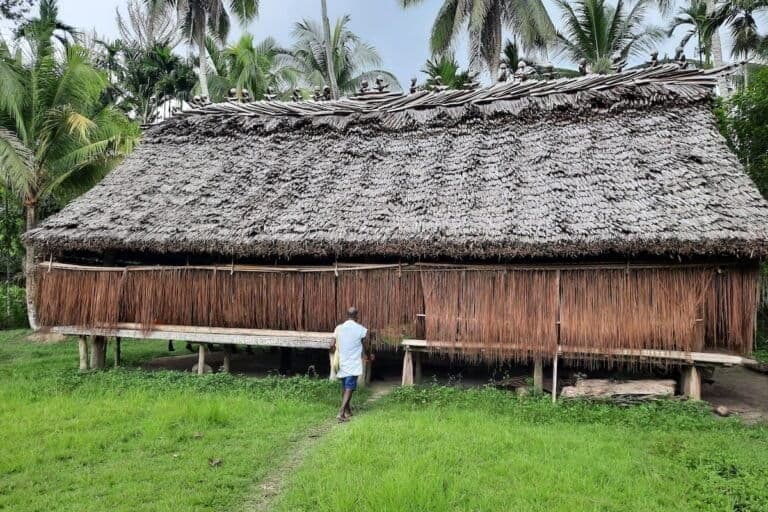
An N’gego in Kembiam Village along the River Sepik. Image courtesy of Project Sepik.
The acknowledgement of the close relationship some communities have with a sentient environment is also being reflected in other environmental campaigns and movements around the world, Falck says. In her paper, she presents the contest over the mine as a collision of two worldviews, with the spirits of the Sepik pitted against an extractive development model.
It’s something that David Lipset, a professor of anthropology at the University of Minnesota in the U.S., also recognizes from his own work in Papua New Guinea.
“In Papua New Guinea, the government has made a big effort to incorporate customary concepts of person and environment,” he says. “But when the chips are down, the government bends over backwards to make deals with extractive industry.”
“In hindsight, I didn’t realize how powerful that document was going to be,” Peni says. “Today it is used as an example of how communities, especially Indigenous communities, can use traditional and cultural governance systems to govern their lands.”
So far, Peni and his colleagues have been successful in halting the plans for the mine and the Papua New Guinean government has not yet issued an environmental permit or mining license — in part thanks to the campaign’s ability to coalesce support around a multitude of worldviews. But with his energy reserves running low after six years of tireless campaigning, Peni says he’s concerned that the fight is not yet won.
“I’m worried that the government is only waiting for people’s resistance to go into hibernation or become dormant for them to approve [the mine],” he says. “We need real people to be champions, more work needs to be done.”
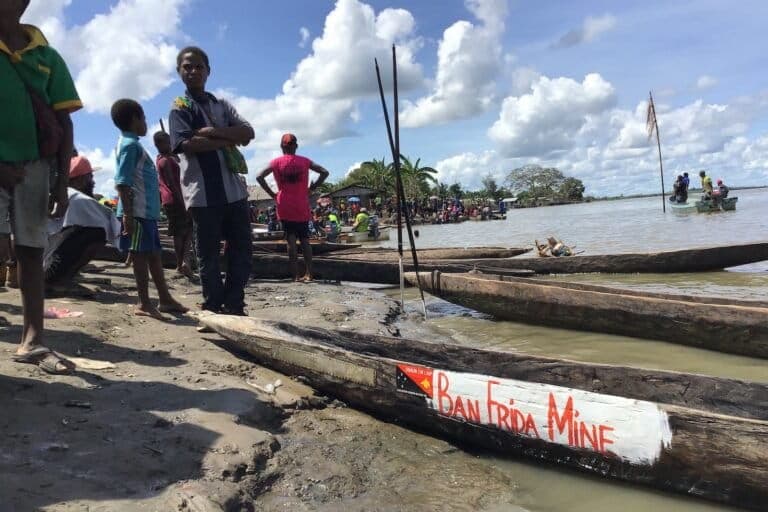
A women’s canoe race at the Angoram Station in 2019. Image courtesy of Project Sepik.
Citation:
Falck, C. (2023). The Supreme Sukundimi Declaration — Sacred water, moral ecologies and ontological politics in a mining encounter in Papua New Guinea. Anthropological Forum, 1-26. doi:10.1080/00664677.2022.2162847
